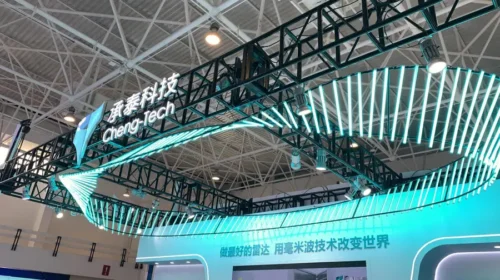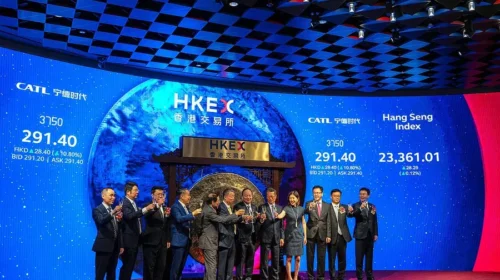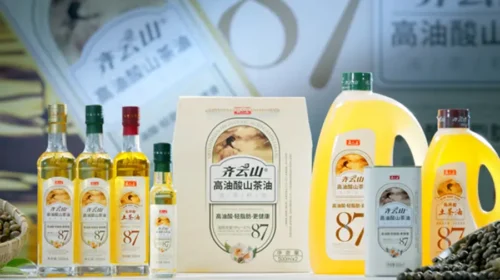Sunny Optical’s profit surprise overshadowed by competition concerns

An upside profit alert from the lens supplier to Apple failed to excite investors, who may fear a growing challenge from a Taiwanese rival
Key Takeaways:
- Sunny Optical said it expects to report a profit of between 1.05 billion yuan and 1.1 billion yuan for the first half of the year, up 1.5 times from 2022
- Shares of the lens supplier to Apple took a hit after the forecast, possibly on rumors that Taiwanese rival Largan has signed a long-term supply agreement with the iPhone maker
By Ken Lo
The release of new Apple iPhones typically gives a lift to the company’s suppliers, and such a boost is expected with the unveiling of the iPhone 16 around September. Two such suppliers, camera module and lens maker Sunny Optical Technology (Group) Co. Ltd.(2382.HK) and acoustic component maker Goertek (002241.SZ) are likely to be beneficiaries. Both have also just released positive forecasts, underscoring just how important relationships with the global smartphone giant can be.
In its July 21 announcement, Sunny Optical said it expects to report a profit of between 1.05 billion yuan ($145 million) and 1.1 billion yuan for the first half of this year, up 140% to 150% year-on-year, and well ahead of market expectation for 859 million yuan. The company attributed the market-beating result to the smartphone market’s recent recovery, as well as its improved product mix that led to a year-on-year increases in shipments, average selling prices and gross margins for its smartphone lenses and camera modules.
But rather than bask in the upbeat report, Sunny’s shares took a bath the next day, dropping as much as nearly 10% to HK$44.80. They later recovered somewhat to stabilize at HK$47, though they were still down from pre-announcement levels.
Largan threat
Recent rumors have it that Largan Precision (3008.TW) entered a rarely seen long-term supply agreement with Apple, which was attracted by Largan’s powerful patented technologies. Real or not, such rumors speak to the importance of technological advantage in the optical lens industry, showing that even a major company like Apple might enter such a long-term agreement to secure the technology it needs to stay ahead.
Largan is Apple’s primary supplier of periscope lenses, accounting for 85% to 90% of its total supply. The company’s monthly revenue in June beat market expectations as iPhone 16 production kicked into high gear, sending its share price to T$3,000 ($91.28), a level not seen for three years. Sunny Optical, meanwhile, is Apple’s biggest supplier of 7P lenses for wide-angle cameras for the iPhone 14. It also hopes to snap up some of Apple’s periscope lens orders this year. But as things stand now, it is unlikely to snatch much from Largan, which may be weighing on its stock lately.
Pu Deyu, head of electronics-sector research at Haitong International Securities, pointed out that a long-term supply agreement would help Largan to lock down market share and pricing with Apple, and the Taiwanese company could also benefit from future strong demand from Android phones as well. Accordingly, he forecast an eye-popping 130% increase in orders for Largan’s periscope lenses this year, and revised his target price for the company’s stock to T$3,400.
Sunny Optical isn’t only feeling heat over competition to supply Apple with iPhone lenses but is also getting pressured by both Largan and another company, Ofilm (002456.SH), in the larger Android smartphone lens market.
Two-legged strategy
Apple lists its top 200 global suppliers in its annual supplier list every year, and the likes of Sunny Optical and AAC Technologies(2018.HK) are on the list. Although not every Apple supplier can make a fortune from the relationship, they can use it to win over other customers. Such a “two-legged” strategy sees lens makers targeting the markets for both iPhone and Android smartphones.
In addition to Apple, Sunny Optical says it has close business relationships with most major Chinese smartphone brands, including Huawei, Xiaomi, Oppo, Vivo and Lenovo, as well as global players like TRW, Sony, Panasonic and Olympus, among others.
However, its two-legged strategy has yet to deliver stable profits for the company. Before the rebound in the first half of this year, its profit moved steadily downward in the past three years from 4.99 billion yuan in 2021 to 2.41 billion yuan in 2022, and then falling again to 1.1 billion yuan last year.
Its annual dividend payouts have fallen similarly over that period. Its dividend of HK$0.20 per share last year was more than 80% lower than the HK$ 1.118 in 2021. The dwindling payouts have weighed on Sunny Optical’s stock, which is down nearly 30% this year and has lost more than 80% of its value from its all-time high of HK$252.60 at the end of 2021.
Largan is also a major supplier of periscope lenses to Huawei, taking up 50% to 60% of its orders this year. That seems to leave an opening for Sunny Optical Tech to get some Huawei business. But Ofilm is also a leading supplier for Huawei’s flagship Mate 60, sparking a surge in its stock starting at the end of last year as Huawei made a comeback after finding a way around crippling U.S. sanctions. That means Sunny Optical’s chances to win major new orders from Huawei could be limited.
Shares overvalued?
Macquarie Group is upbeat on Sunny Optical and estimates that gross margin for its smartphone camera module business will rise from between 2% and 3% in the first half of last year to 7% to 8% this year thanks to rising prices. It also forecasts that gross margin for Sunny’s smartphone lens business will rise from around 14% in the first half of last year to around 24% this year. Macquarie believes that as Sunny Optical develops higher-end Android products and grows in importance as an iPhone supplier, its gross margin will improve further in the second half of the year. Accordingly, it raised its target price for the company from HK$65 to HK$79.20.
AI is expected to drive a cyclical recovery for the smartphone industry over the next two years, though Sunny Optical doesn’t have a commanding advantage in that regard. It is still up against the formidable Largan in the iPhone market, while competition in the Android market remains cutthroat. Its forecast price-to-earnings (P/E) ratio stands at 24.8 times, well ahead of Largan’s 16.7 times. That means its shares still look a bit overvalued and, unless it can make further technological breakthroughs, its stock may require some downward adjustment before it regains some of its former appeal to investors.
To subscribe to Bamboo Works free weekly newsletter, click here






